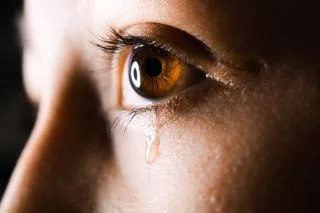Historically, women have comprised only a fraction of the total number of adults under correctional supervision (approximately 7%); it’s in part for this reason that imprisoned women have been labeled “forgotten offenders” even though their numbers continue to rise.

According to the Sentencing Project (2022), the number of incarcerated women was nearly five times higher in 2020 than in 1980, an increase of more than 475%. In response to the COVID-19 pandemic, there was a significant decline in incarceration rates since most prisons and jails throughout the nation were trying to discharge as many prisoners as possible to reduce the spread of the virus; however, many states began to reverse those practices in 2021 since most citizens had been vaccinated and the virus appeared to have weakened.
The group impacted the most by this increase has been African American women whose imprisonment rates were nearly twice that of Caucasian women in 2020. Sentencing guidelines and mandatory-minimum sentences have kept judges from using discretion, thereby driving up female incarceration rates.
General Characteristics of Female Offenders
Female offenders share many characteristics with male offenders and are remarkably similar in terms of age, socioeconomic level, and race/ethnic background. Historically and currently, African American and Latino males, particularly those from low-income households, have been overrepresented within our nation’s prisons and jails. Female prisoners follow similar patterns; for instance, African American women are twice as likely to be incarcerated as Caucasian women.
According to The Sentencing Project (2023), approximately 58% of incarcerated women are mothers of children under age 18. Prior to their arrest and incarceration, most were the sole caregivers of their children. The arrest and incarceration of mothers raises the risk of child welfare services involvement even though most underlying criminal convictions are unrelated to child abuse and neglect. The above study emphasized that many imprisoned females will have their parental rights terminated; therefore, the generational cyclical effects of incarceration and foster care placement are significant.

The criminal justice system must acknowledge the social and psychological forces that often underlie female offending, including higher-than-average rates of trauma, physical and sexual victimization, untreated mental illness, substance abuse, and poor behavioral decision-making.
Couloute (2018) further emphasized that given the extensive histories of abuse that imprisoned women often report, the need for trauma-sensitive resources and services is critical. Few correctional institutions have gender-responsive programs or specially trained staff to address the unique needs of female prisoners in preparing them for community reintegration. Since most female prisoners have limited vocational skills and employment histories, female parolees will often experience greater difficulty obtaining sustainable employment and housing in comparison to male parolees.
The Incarcerated Mother
According to the Women and Justice Project (2020), 64% of mothers in state prison lived with their children prior to incarceration. The maintenance of mother-child relationships through periods of incarceration has caused much concern and debate. Indeed, sentencing female offenders to probation or other intermediate sanctions allows them to remain home, able to care for their children while serving their sentences. But how can mother-child ties be maintained when the mother is behind bars?
According to Sandifer (2017), children of incarcerated mothers are one of the most vulnerable and at-risk populations in the United States. The mother’s incarceration exacerbates the level of risk beyond that of a father’s incarceration. When fathers are incarcerated, the children typically remain with their mothers; however, when mothers are incarcerated, children are more likely to be cared for by a family member or placed in the foster care system.
Sandifer emphasized that recent research indicates that a mother’s incarceration can lead to a multigenerational crime and incarceration effect, mother-child attachment issues, diminished school performance, and delinquent behaviors; it can also lead to or exacerbate children’s mental health issues, far more powerfully than does a father’s incarceration.
Pregnant inmates are an additional concern for those handling female offenders. In what is believed to be a first-of-its-kind research study by John Hopkins Medicine (2019), nearly 1,400 pregnant women were admitted to 22 U.S. state and federal prisons in 2017, out of nearly 110,000 total. This figure did not include the number of pregnant inmates already in jail.
As of this writing, there are no mandatory standards for prenatal care for female prisoners. The researchers of this particular study emphasized that gathering diverse, nationally representative data pertaining to how pregnancy care was provided is a critical step toward developing for tracking the data and subsequently, improving maternity care in the U.S. prison system.
History of Abuse

The mental health needs of female offenders are of further concern. Although the prevalence of mental health disorders among jail and prison inmates is well known, the gender disparity that exists between men and women is quite pronounced.
More than two-thirds of incarcerated women in a 2012 survey reported having a history of mental health problems, far exceeding that of male prisoners as reported by the U.S. Bureau of Justice Statistics (2017). A 2020 study by the Justice Research and Statistics Association revealed that a severe mental illness (SMI) significantly increased women’s risk for the onset of substance use and engagement in crime. These findings suggest implementing evidence-based interventions for at-risk women that address trauma-related distress and mental health concerns to decrease entry or reentry into the criminal justice system.
According to the National Resource for Justice-Involved Women (2016), appropriate identification of needs, treatment planning, and follow-up are particularly important for community reintegration. Even though there is limited research on female offenders—particularly in evaluating reentry programs specific to women—the factors that appear most important for successful reintegration include establishing suitable housing, finding gainful, sustaining employment, and reuniting with children and family. Additionally, female reentry programs need to emphasize the importance of post-release treatment and counseling for physical and mental well-being, including substance abuse, as well as protect women from reentering into abusive relationships.

